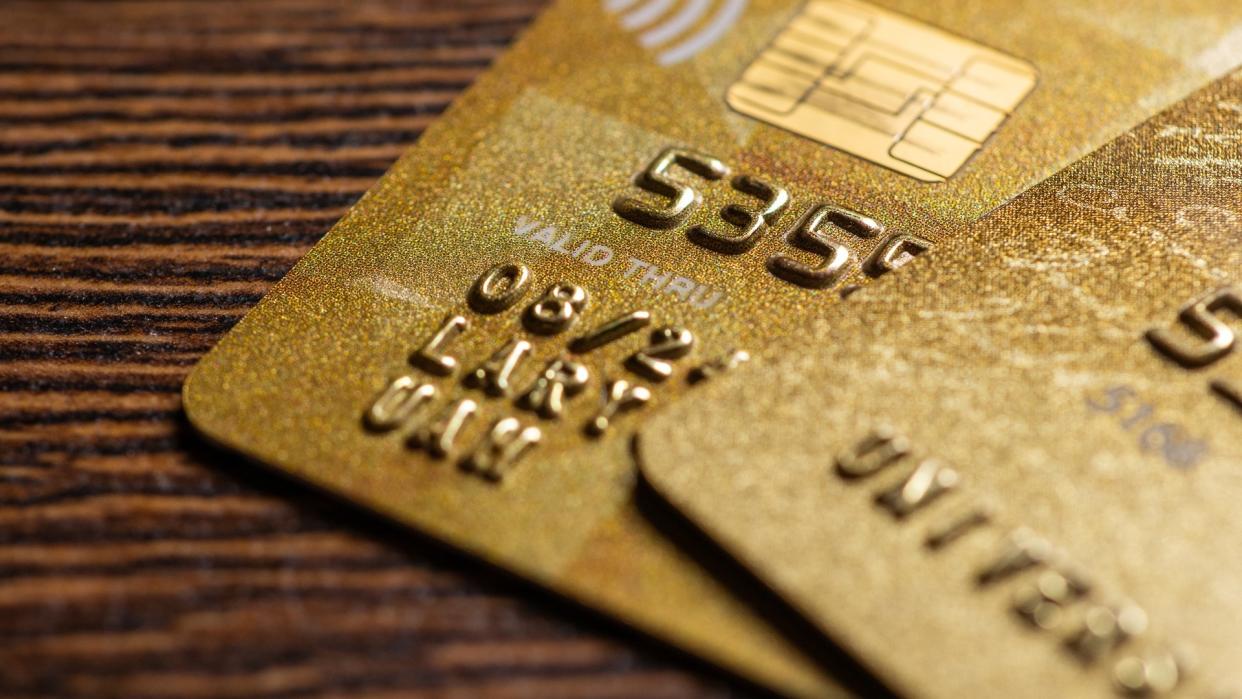What Do Credit Card Numbers Mean?

To the untrained eye, credit card numbers might appear to be nothing but a series of random numbers haphazardly thrown together. But they are anything but: Credit card numbers are created using specific rules. These rules help guide the creation of credit card numbers down to the very last digit.
Explore: GOBankingRates’ Best Credit Cards for 2023
Advice: If Your Credit Score Is Under 740, Make These 4 Moves Now
Credit card numbers consist of a few parts, each of which must follow the rules for credit cards. Thus, it helps to know what each part means. But first, here is a brief overview of what exactly credit card numbers are.
What Is a Credit Card Number?
A credit card number is the set of digits printed on either the front or back of a physical credit card. Credit card numbers are often 16 digits, but they can be as long as 19 digits or as short as 13. These numbers are systematically assigned and indicate several things about your credit card type.
Take Our Poll: How Long Do You Think It Will Take You To Pay Off Your Credit Card Debt?
For instance, credit card numbers indicate not only your account number but also the card issuer. Even the card’s industry affiliation is shown in the credit card number. As we break things down further, you will see how each digit plays a role.
Four Parts of a Credit Card Number
Credit cards might seem complicated, but they consist of just four distinct parts. Once you understand each part, it will become clear that credit card numbers are not as tricky as they seem.
1. First Digit: Major Industry Identifier
The first digit is the major industry identifier (MII). The MII shows the card’s industry affiliation, such as an airline, a bank or travel and entertainment. Some of the most common MIIs:
Airlines
Airlines & financial
Travel & entertainment
Banking & financial (Visa)
Banking & financial (MasterCard)
Merchandise & banking
Petroleum
Healthcare & telecommunications
For example, an airline credit card number will start with a one, while a Visa bank card will start with a four. This rule applies regardless of the card issuer.
2. First Six Digits: Issuer Identification Number
The next five digits indicate the card issuer. However, the MII is usually lumped into the second part, even though it is the same for different issuers. Thus, the first six digits become the issuer identification number (IIN) or bank identification number (BIN).
If this sounds complicated, it may help to see some of the most common IINs. Here are some examples:
Card Issuer | IIN | Card Type |
American Express | 379741 | American Express Credit |
Bank of America | 480011 | Bank of America Visa Gold |
Capital One | 414709 | Capital One Signature Visa |
Chase | 414720 | Chase Signature Visa |
Citi | 542418 | Citibank Platinum Mastercard |
Discover | 601101 | Discover Rewards |
Wells Fargo | 446542 | Wells Fargo Platinum Visa |
US Bank | 403766 | U.S. Bank Visa |
Barclays | 559309 | Barclays World Mastercard |
USAA | 549123 | USAA Platinum Mastercard |
This list is not exhaustive. One card issuer might have multiple IINs if, for example, it offers credit cards in different industries. Nevertheless, these are some examples you might see within your card number if you open a popular credit card.
3. Next 6-12 Digits: Account Number
The next 6-12 digits of the credit card number are the account number. This is the part that identifies the individual credit card account. Unlike the IIN, the account number can vary in length depending on the credit card.
However, the account number is nine digits in length for the typical 16-digit number. Given that the IIN is always six digits, that leaves one last digit to round out your card number.
4. Last Digit: Card Verification
The last digit of any card number is the digit that card issuers use to validate the card number. Even though it is just one digit, the last part of the credit card number might be the most perplexing. The digit is generated by a formula known as the Luhn Algorithm and helps verify the integrity of the card number.
Specifically, the verification digit, or checksum, helps catch transcription errors made by humans or computers. Indeed, credit card numbers are not random strings of digits but follow a fine-tuned set of rules for their generation. The last digit helps ensure credit card numbers fully adhere to those rules.
Bottom Line
Credit card numbers are printed on the front or back of your credit card. They are often 16 digits, but that number can be as few as 13 or as many as 19. Credit card numbers consist of four parts: the MII, the IIN, the account number and the validator. If your credit card has all four parts, it has everything you need to carry in your wallet and start making purchases.
More From GOBankingRates
This article originally appeared on GOBankingRates.com: What Do Credit Card Numbers Mean?
